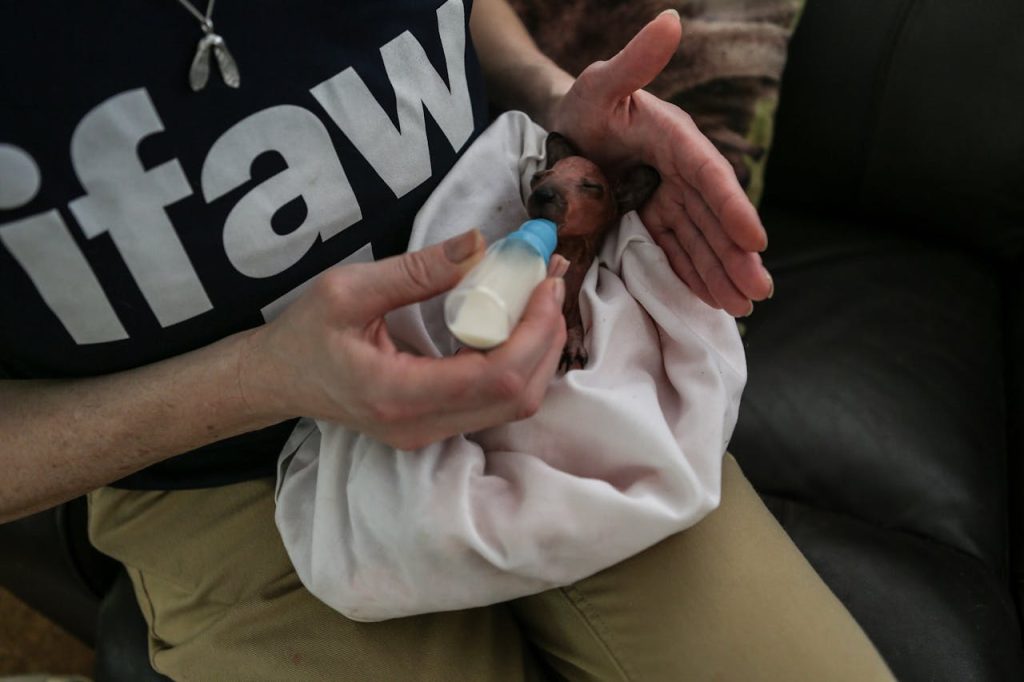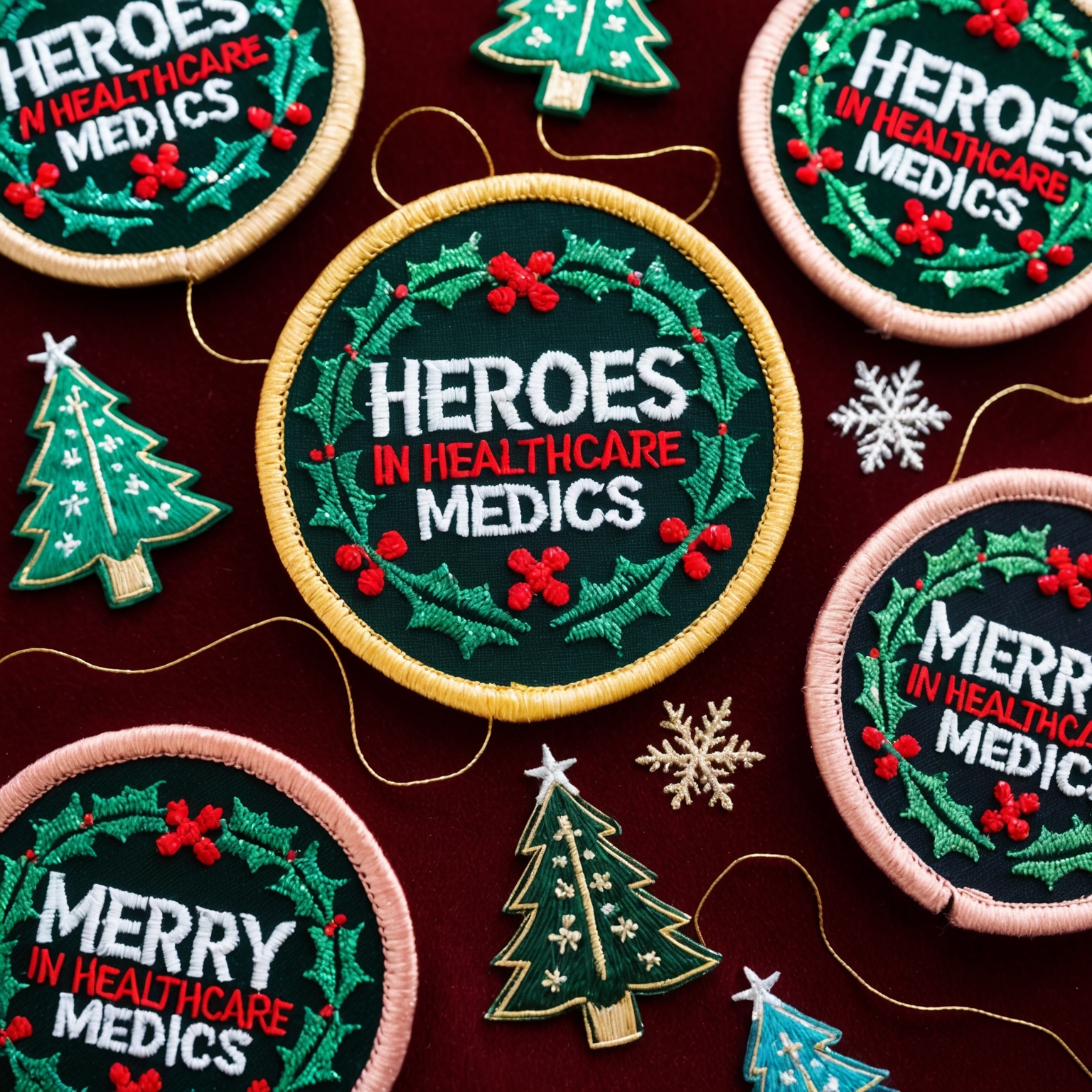Non-profit organizations play a pivotal role in addressing societal challenges, advocating for change, and providing essential services to communities in need. From environmental advocacy to social justice initiatives and humanitarian aid, non-profits rely on their ability to inspire action and connect with their audiences. In this mission-driven space, every symbol, message, and gesture matters—especially when it comes to creating meaningful patches.
Meaningful patches have become a popular tool for non-profits seeking to recognize their volunteers, raise awareness, and foster a sense of community. These patches, worn proudly on clothing, bags, or uniforms, serve as symbols of the organization’s values and mission. Whether it’s to recognize years of service, commemorate a specific event, or raise awareness for a cause, patches help strengthen the bond between the organization and its supporters.
In this article, we will explore the process of creating meaningful patches for non-profit organizations, focusing on the essential design elements, the symbolic nature of patches, and how they can be effectively used to promote a cause, celebrate volunteers, and build community engagement. We will also cover best practices for designing, producing, and distributing these patches in ways that align with the core values of non-profits.
Why Meaningful Patches Matter for Non-Profits
Strengthening Identity and Brand Recognition
For non-profit organizations, brand recognition is essential to driving engagement and inspiring action. A clear and consistent brand identity helps supporters recognize the organization, understand its mission, and feel connected to its cause. Meaningful patches provide a tangible representation of this brand identity, offering a way for volunteers, staff, and supporters to showcase their affiliation and commitment.
When designed thoughtfully, patches can carry a powerful message that embodies the organization’s core values and purpose. Wearing a patch that symbolizes environmental advocacy, animal protection, or humanitarian aid allows individuals to visibly align themselves with the causes they support, helping non-profits strengthen their community of supporters.
Fostering a Sense of Belonging and Unity
Non-profits often rely on the collective efforts of volunteers and supporters to achieve their mission. Creating a sense of belonging and unity among these individuals is critical for long-term engagement and success. Meaningful patches can serve as a unifying symbol for teams of volunteers, fostering a sense of pride and belonging within the organization.
For example, volunteers working on disaster relief efforts or community clean-up initiatives might receive a patch that commemorates their participation in a specific project. These patches help volunteers feel recognized for their efforts and reinforce their sense of connection to the organization’s broader mission.
Recognizing Contributions and Celebrating Milestones
Recognition is an important part of volunteer management in non-profit organizations. Volunteers contribute their time, skills, and energy to support important causes, and acknowledging their efforts is key to retaining their engagement. Meaningful patches can be used to recognize milestones such as years of service, leadership roles, or participation in major events.
By presenting volunteers with patches that symbolize their contributions, non-profits can celebrate their dedication and show appreciation in a meaningful and lasting way. These patches become cherished keepsakes that remind volunteers of their impact and encourage them to continue supporting the cause.
Raising Awareness and Inspiring Action
One of the most powerful ways non-profit organizations use patches is to raise awareness for their cause. Meaningful patches can serve as conversation starters, sparking interest in the organization’s work and inspiring others to get involved. Whether it’s through a simple design that features a logo or a more complex graphic that highlights a specific cause, patches have the potential to amplify the organization’s message and reach new audiences.
For example, a patch designed to promote environmental conservation might feature symbols such as trees, animals, or water, along with a call to action like “Protect Our Planet.” When supporters wear these patches, they become advocates for the cause, helping to spread awareness and encourage others to join the movement.
Essential Design Elements for Meaningful Patches
Creating custom meaningful patches for non-profit organizations requires careful consideration of the design elements that will best convey the organization’s message and values. A well-designed patch is more than just an accessory; it’s a visual representation of the cause, the people behind it, and the impact they hope to make. Here are some essential design elements to consider:
1. Clear Representation of the Mission
At the core of every meaningful patch is the mission of the organization. The patch design should clearly represent the non-profit’s purpose, whether it’s through the use of symbols, text, or imagery. Start by identifying the key message or values the patch needs to communicate. Is it about social justice? Environmental protection? Community service?
For example, a patch for an organization focused on animal rescue might feature an image of an animal, a paw print, or a heart to symbolize care and protection. The design should be simple enough to convey the message at a glance, while also leaving a lasting impression on those who see it.
2. Thoughtful Use of Symbols and Imagery
Symbols are a powerful way to communicate complex ideas in a simple, visual format. Non-profit organizations can use meaningful symbols and imagery that resonate with their mission and target audience. When choosing symbols, consider both their literal and metaphorical meanings.
For example, a non-profit that advocates for clean water might incorporate a droplet of water, waves, or a faucet into the design. These symbols evoke the issue at hand and create a connection between the patch and the organization’s cause.
However, it’s essential to strike a balance between creativity and clarity. While complex designs may look visually striking, they can sometimes obscure the message if the symbols are too abstract or difficult to interpret. Keep the design simple, ensuring that anyone who sees the patch can quickly understand its purpose.
3. Use of Colors that Evoke Emotion and Align with the Brand
Colors play a significant role in the design of meaningful patches, as they can evoke emotions and create visual appeal. When designing patches for non-profits, it’s important to choose colors that reflect the organization’s brand while also aligning with the emotional tone of the cause.
For instance, green is often associated with environmental causes, as it symbolizes nature, growth, and sustainability. Blue may be used by organizations that focus on humanitarian aid or clean water initiatives, as it evokes calmness, trust, and reliability. Meanwhile, red is often associated with urgency or action, making it a fitting color for causes related to health, emergency response, or social justice.
Using the organization’s official colors ensures consistency across branding materials and helps strengthen brand recognition. Consider the emotional impact of each color and how it aligns with the message the patch aims to convey.
4. Typography that Enhances Readability and Impact
If the patch design includes text—whether it’s the name of the organization, a tagline, or a call to action—choosing the right typography is essential. Text on patches should be easy to read, even from a distance. Avoid overly complex or ornate fonts that may be difficult to decipher when scaled down for patch size.
Bold, sans-serif fonts are often a good choice for non-profit patches, as they are clean, modern, and easy to read. If your organization has a specific font used in its branding, consider incorporating that into the design to maintain consistency. Additionally, the text should be kept to a minimum; patches are small, and too much text can make the design look cluttered.
5. Incorporating the Organization’s Logo or Tagline
One of the most effective ways to ensure brand consistency is by incorporating the organization’s logo or tagline into the patch design. The logo serves as a recognizable symbol of the organization, while a tagline can communicate the organization’s mission or values in a concise, memorable way.
When using a logo on a patch, ensure that it remains clear and legible. Avoid shrinking the logo too much, as this can result in loss of detail. If necessary, simplify the logo or remove intricate elements that may not translate well onto a small patch. The goal is to create a design that is both visually appealing and easy to identify.
Best Practices for Designing and Producing Meaningful Patches
Designing meaningful patches for a non-profit organization requires careful attention to detail, from concept development to final production. Here are some best practices to guide the process:
1. Start with a Clear Concept and Purpose
Before diving into the design process, it’s essential to have a clear understanding of the patch’s purpose. What message does the patch need to communicate? Is it meant to recognize volunteers, raise awareness, or promote a specific campaign? Defining the patch’s purpose early on will help guide design decisions and ensure that every element of the patch aligns with the organization’s mission.
For example, if the patch is meant to recognize volunteers who have participated in a specific event, the design might include the event’s name, date, and a symbol that represents the cause. On the other hand, if the patch is part of a fundraising campaign to raise awareness for an environmental cause, the focus may be on bold imagery and a call to action.
2. Choose High-Quality Materials
The quality of the materials used in the production of the patch is crucial to its durability and visual appeal. Non-profit organizations should opt for high-quality fabrics and embroidery to ensure that the patches withstand wear and tear. Common materials for patches include woven fabric, embroidered thread, and PVC for more durable, waterproof patches.
For patches that will be worn frequently on clothing or gear, durability is especially important. Choose fabrics that are resistant to fading, tearing, and fraying, ensuring that the patch retains its appearance over time. Additionally, the use of high-quality thread for embroidered designs will ensure that the details remain sharp and well-defined.
3. Simplify the Design for Clarity
While it’s tempting to include multiple elements in a patch design, simplicity is key to creating a meaningful and impactful patch. A cluttered design with too many symbols, colors, or text can overwhelm the viewer and dilute the message. Instead, focus on one or two core symbols or ideas that capture the essence of the organization’s mission.
Consider how the patch will look from a distance. A clean, simple design will be more recognizable and effective in communicating the organization’s message. When in doubt, reduce the number of elements in the design and focus on clarity.
4. Ensure Scalability
Patches are typically small, with standard sizes ranging from 2 to 4 inches in diameter. Therefore, it’s important to ensure that all design elements are scalable and legible at smaller sizes. Intricate details or fine text may become difficult to read when embroidered or printed on fabric, so simplify the design where necessary.
One way to ensure scalability is to create mock-ups of the patch at its intended size before finalizing the design. This will help identify any elements that need to be adjusted for readability or clarity.
5. Collaborate with an Experienced Patch Manufacturer
Partnering with an experienced patch manufacturer is essential for producing high-quality patches that meet the non-profit’s design and durability requirements. Look for manufacturers with experience in creating custom patches for non-profits or similar organizations, as they will be familiar with the specific needs and challenges of producing patches for mission-driven causes.
A reputable manufacturer will offer a variety of options for customization, including different types of stitching, materials, and backing options (such as iron-on or Velcro). They should also provide guidance on how to optimize the design for embroidery or printing, ensuring that the final product is of the highest quality.
6. Consider Eco-Friendly Options
Many non-profits, particularly those focused on environmental conservation or sustainability, may want to explore eco-friendly options for their patches. Choosing sustainable materials, such as organic cotton or recycled polyester, can align with the organization’s values and reinforce its commitment to protecting the environment.
Additionally, some manufacturers offer environmentally friendly embroidery threads and production processes that minimize waste and reduce the patch’s carbon footprint. By opting for eco-friendly materials, non-profits can demonstrate their dedication to sustainability while producing meaningful patches that resonate with their supporters.
7. Incorporate the Patch into a Larger Campaign
Patches are not just standalone items; they can be integrated into larger campaigns that promote the organization’s mission and engage supporters. For example, non-profits can use patches as part of a fundraising campaign, offering them as incentives for donations. This approach turns the patch into a symbol of support that donors can wear proudly, while also generating revenue for the organization.
Patches can also be distributed during special events, such as volunteer appreciation days, environmental clean-ups, or awareness walks. By creating patches that are tied to specific campaigns or initiatives, non-profits can reinforce their message and create a stronger connection with their audience.
Using Meaningful Patches to Engage Supporters and Build Community
Patches are not only a powerful tool for recognition and branding but also a means of building a strong community around a shared mission. When supporters wear patches that symbolize their commitment to a cause, they become ambassadors for the organization, helping to spread its message and inspire others to get involved. Here are some ways non-profits can use patches to engage their supporters and build a sense of community:
1. Create Limited-Edition Patches for Special Events
Limited-edition patches can create excitement and exclusivity around a specific event or campaign. Non-profits can design special patches to commemorate annual events, such as charity walks, fundraising galas, or volunteer appreciation days. These patches can be offered as keepsakes to participants, reminding them of their involvement in the event and encouraging them to return in the future.
Limited-edition patches also provide a unique way to recognize high levels of participation or support. For example, volunteers who have participated in multiple years of an event might receive a special patch that distinguishes their dedication and long-term commitment.
2. Offer Patches as Donor Incentives
Donor engagement is essential for the success of any non-profit organization, and offering meaningful patches as donor incentives can help strengthen relationships with supporters. Non-profits can create custom patches to offer as rewards for donations, recognizing the donor’s contribution to the cause.
For example, an organization that advocates for wildlife conservation might offer a series of patches featuring different endangered species. Donors who contribute at different levels could receive a unique patch corresponding to their donation tier, encouraging repeat donations and increasing overall support.
3. Build a Collection Series
Non-profits can take the idea of patches a step further by creating a collectible series that supporters can build over time. Each patch in the series could represent a different aspect of the organization’s mission or a specific project, encouraging supporters to stay engaged and collect all the patches.
For example, an environmental non-profit might create a series of patches representing different ecosystems, such as forests, oceans, and wetlands. Supporters who participate in activities related to each ecosystem could earn the corresponding patch, creating a sense of accomplishment as they complete the collection.
4. Encourage Patch Sharing on Social Media
To further amplify the impact of meaningful patches, non-profits can encourage supporters to share photos of themselves wearing their patches on social media. This creates a ripple effect, as each post increases visibility for the organization and helps spread its message to a broader audience.
By creating a branded hashtag or offering incentives for patch-sharing posts, non-profits can increase engagement and build a sense of community among their supporters. This approach also helps the organization reach new potential supporters who may be inspired by seeing others proudly display their involvement in the cause.
Conclusion
Meaningful patches are more than just fabric and thread—they are symbols of the values, mission, and impact of non-profit organizations. From raising awareness to recognizing volunteer contributions and fostering a sense of community, patches play a vital role in helping non-profits connect with their supporters and amplify their message.
By focusing on thoughtful design, high-quality materials, and meaningful symbolism, non-profits can create patches that inspire pride and engagement. Whether used to celebrate milestones, promote fundraising efforts, or build a sense of unity among volunteers, meaningful patches offer a unique and powerful way to bring people together around a shared mission.
If you are interested in purchasing high-quality custom patches, feel free to call us at 1-866-903-4903 or fill out one of our FREE quotes here.




